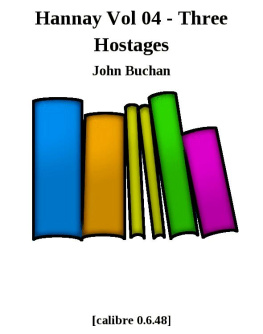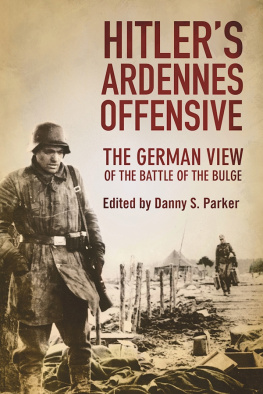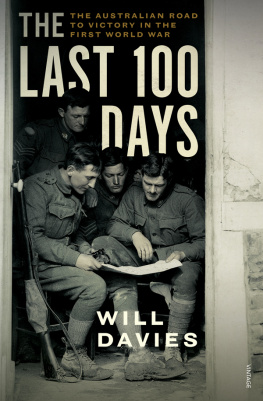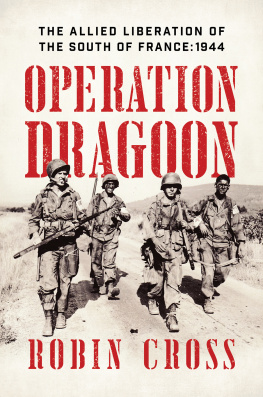Table of Contents
1918-CATASTROPHE TO VICTORY
VOLUME 2
THE ALLIED HUNDRED DAYS OFFENSIVE, AUGUST-NOVEMBER 1918
1918-Catastrophe to Victory Volume 2 The Allied Hundred Days Offensive, August-November 1918 by John Buchan ILLUSTRATED FIRST EDITION Leonaur is an imprint of Oakpast Ltd Copyright in this form 2018 Oakpast Ltd ISBN: 978-1-78282-706-1 (hardcover) ISBN: 978-1-78282-707-8 (softcover) http://www.leonaur.com Publishers Notes The views expressed in this book are not necessarily those of the publisher.

Introduction
How the German Spring Offensive was launched and how it came so close to success, only to fail as the Allies under Foch confounded it, has been described in the first volume of 1918-Catastrophe to VictoryThe German Ludendorff Spring Offensive
Leonaur Editors

CHAPTER 1: The Turn of the Tide
By 18th July of that year, the final battle of the Great War had been joined, but it was bound to develop slowly. Let us attempt to discover what was in Fochs mind. All former Allied offensives had, after a shorter or longer time, come to a halt for the same reason wearied troops were met by fresh enemy reserves. The battle became, as it were, stereotyped; the enemy was able to perfect his defence; and the action ended in stalemate. Even after further success was impossible, there was a tendency in the attacker to continue hammering at an unbreakable front, because he had set the stage for action in that one area and could not easily shift his batteries and communications elsewhere. In a word, the offensive lacked mobility, and was apt to end in a needless waste of men. This trait was as notable in the Allied attacks on the Somme, at Arras, and at Passchendaele, as in the futile German attempts at Verdun.
The first problem was, therefore, to get a superior mobility in the attack, and to bring in the element of surprise. This the Germans achieved at St. Quentin by the use of storm battalions and the method of infiltration. Their plan was bettered by Foch by the use of his light tanks. There was now no need for a prolonged artillery bombardment; the tanks were sufficient to sweep a path for the infantry. There was less need also for elaborate preparations before the battle, and consequently an attack could be rapidly designed for any area where the prospects seemed favourable.
It was precisely this consequence of the new system of war which the German Staff did not grasp. They allowed an action which was based essentially on surprise to drift into a stationary battle. They permitted their army to become accroch , alike on the Somme, on the Lys, and on the Marne; and, therefore, sooner or later they were faced by Allied reserves and brought to a standstill. Their method could only have succeeded had there been no such reservesa point on which Ludendorff was in singular error.
Foch drew the logical deduction from the tactics of surprise. He resolved to make the battle highly mobile. After striking a blow he would stay his hand as soon as serious resistance developed, and attack instantly in another place. The enemy would be subjected to a constant series of surprises. Before his reserves could be got up he would have lost heavily in ground and men; his mass of manoeuvre would be needed to fill up the gaps in his front; and by swift stages that mass of manoeuvre would diminish. This was obviously the right strategy to fit the new tactics, and it was Fochs supreme merit that he grasped this truth from the early days of the German Spring Offensive, 1918. He had to wait long for his chance; but when the opportunity came he seized it with the precision of genius. He broke down the whole system of trench warfare and restored the open battle; and he was able to do this because he had found a method to obviate the clumsiness of the modern military machine. His secret lay in the combination of three thingsthe weapon of the tank, the tactics of surprise, and the strategy of complete mobility.
At first it would appear that von Boehn did not realise the meaning of Mangins success. He had eight divisions beyond the Marne, and the loss of the main highway from Soissons meant that they depended for supply upon the parish roads threading the wooded hills of the Tardenois. Every hour, too, that his 80,000 men remained south of the river increased the peril of the thirty divisions inside the salient. But for the moment confusion seems to have reigned at German Headquarters, and nothing was done to protect the apex on Thursday, nor yet on Friday, the 19th July, when Mangin and Dgoutte were establishing their ground and beating off counter-attacks.
For thirty-six hours von Boehn hesitated; then on the afternoon of the Friday he gave orders for the retreat. It began at 9 p.m. that evening. The plan seems to have been to crowd up all available reserves against Mangin, who was regarded as the chief danger. Two divisions were borrowed at once from Prince Rupprecht, and before the end of the month the enemys strength against the Tenth French Army had risen to twenty-five divisions.
Mangin, according to Fochs orders, held his hand. He had done all he had set out to do and had cut the Soissons road; it was now for Dgoutte and de Mitry and Berthelot to take up the running. On Saturday, the 20th, the eight German divisions staggered back across the river under the concentrated fire of the French batteries from the high ground on their flanks. Dgoutte advanced to the line Bouresches-Latilly-Plessier Huleu, where he linked up with Mangin, whose right had now reached the villages of Parcy-Tigny and Villemontoire. De Mitry and Berthelot between them that evening had the whole southern bank of the Marne, and their outposts had begun to cross the river, while Berthelot had also made an advance between the Marne and Rheims. On the 19th he had received part of the British 22nd Corps, under Sir Alexander Godley, which took the place of the Italian 2nd Corps, and its 51st and 62nd Divisions made progress in the region of Marfaux and the Bois de Courton, thereby endangering the highroad along the Ardre which joined Fismes on the Vesle with Chatillon on the Marne.
On Sunday, the 21st, the Sixth and Fifth Armies struck in earnest. Dgouttes object was to outflank von Boehn on the north bank of the Marne and drive him from the river. His French and American troops, in a magnificent movement swept eastward to a front from Breny, on the Ourcq, to the west of Rocourt and Epieds; while de Mitry, who had also American divisions in his command, forced the river passage between Gland and Chartves.
****** The Americans were the 1st Corps, under Major-General Liggett including the 3rd, 25th, and 26th Divisions, the two first which had greatly distinguished themselves in this area during the Third Battle of the Aisne. ******
Chteau-Thierry was no longer tenable, and that evening the Sixth Army were in its streets. The Allies were now close on the vital road junction of Oulchy-le-Chteau. Von Boehn had substantially narrowed his salient and left only some six miles of river front as the mouth of the pocket. As his flank was turned on the west, it seemed reasonable to assume that he was in process of evacuating the whole area and falling back on the Ourcq and the Vesle.
On the contrary, he attempted a stand. On Monday, the 22nd, de Mitry crossed the river between Passy and Dormans, and at Port-Binson, south of Chatillon, occupying in the former area all the ground in the loop of the stream. His left also made a slight advance north of the Ourcq, and Berthelot took the village of Bouilly at the northern end of the Montagne de Rheims. But on the 23rd there was a sudden stiffening of resistance in the south of the salient. Dgoutte alone had some twenty German divisions against him, four of them from the fresh reserves of Prince Rupprecht. Von Boehn held out stoutly on his few miles of river front the very place where his supply problem was at its worst.
Next page



















